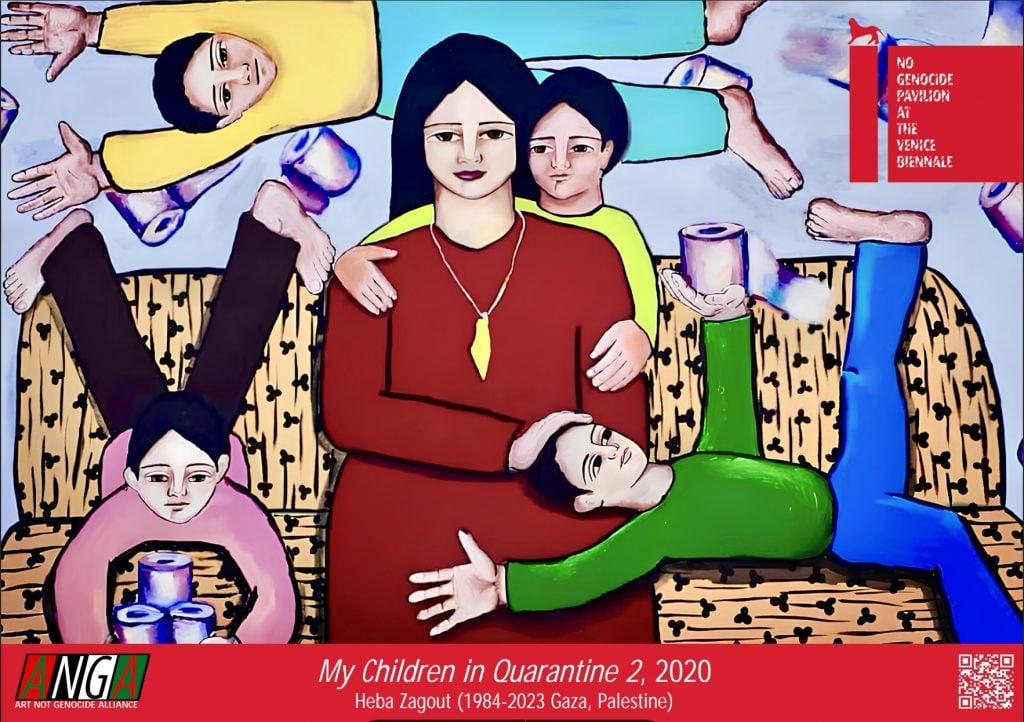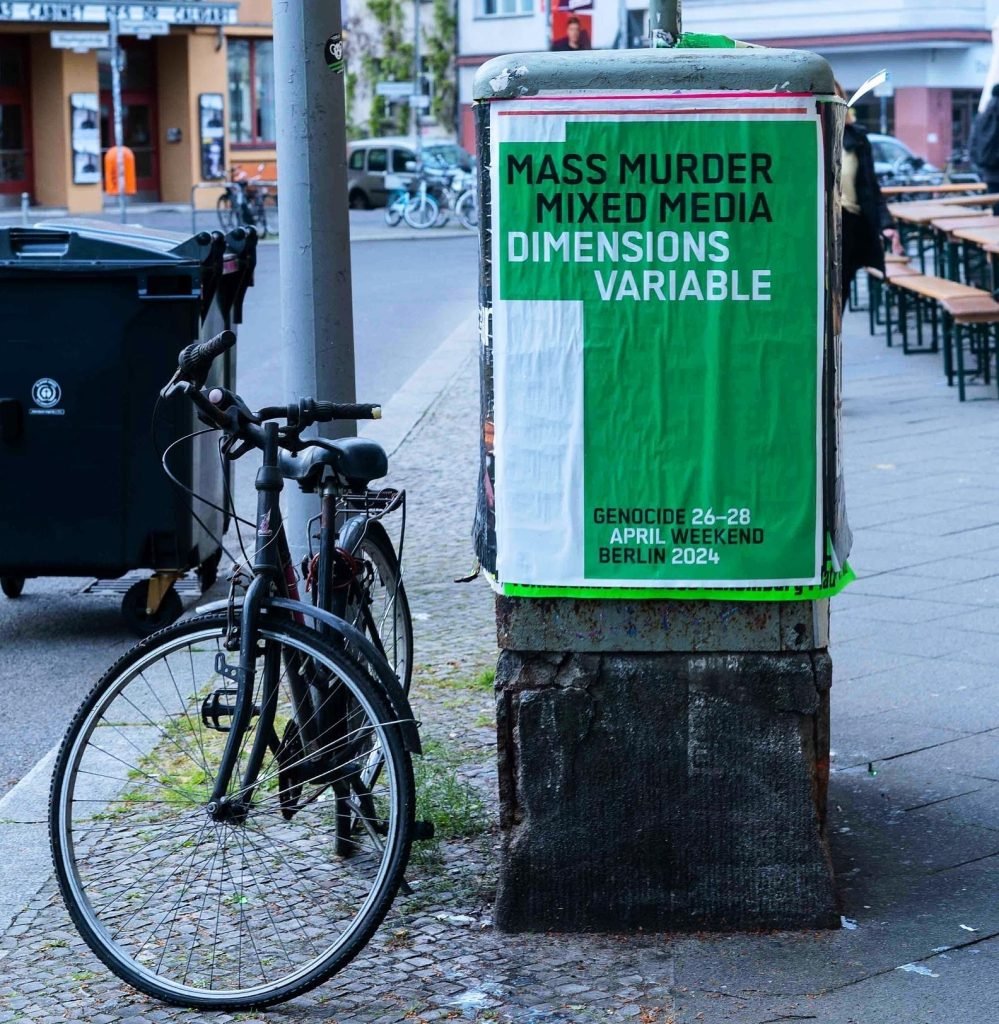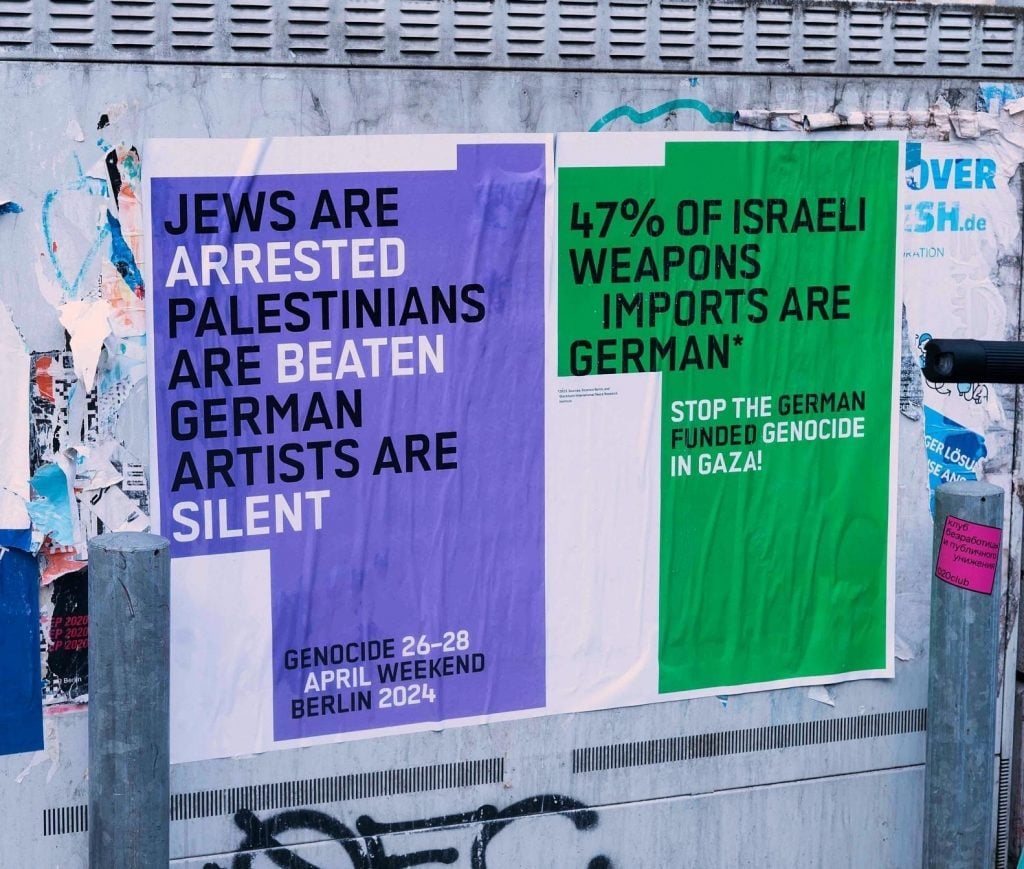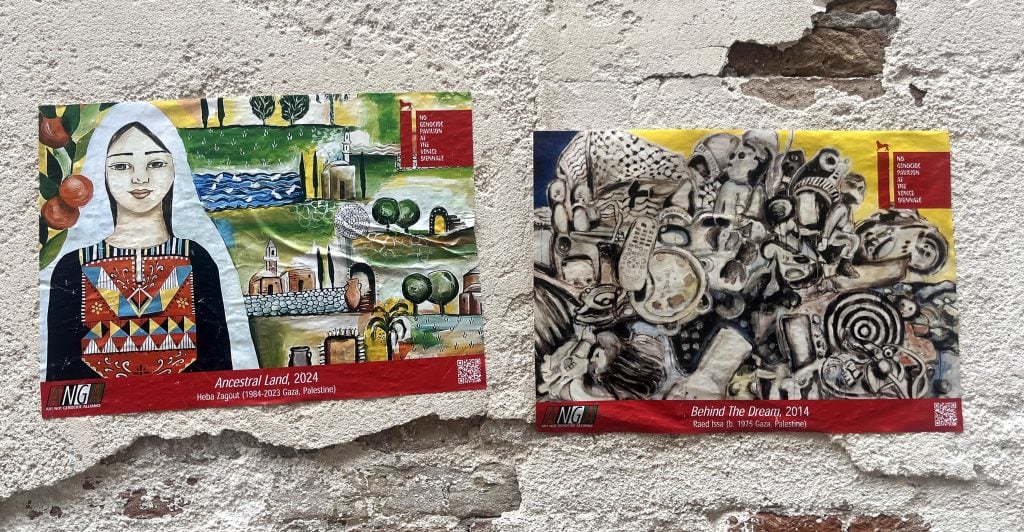Art World
Posters Spotted Across Berlin and Venice Accuse the Art World of Complicity
Activist groups call on the art world to cease 'business as usual' amid conflict in Gaza.

Activist groups call on the art world to cease 'business as usual' amid conflict in Gaza.

Jo Lawson-Tancred

Hundreds of pro-Palestine posters have popped up overnight around galleries in Berlin as this year’s Gallery Weekend Berlin gets underway. The signs mimic the event’s official branding but advertise instead “Genocide Weekend Berlin” with biting slogans intended to draw attention to “the German funded genocide in Gaza.”
Some of the more subtle posters satirize the jarring nature of a “business as usual approach” within the wider geopolitical context. One, for example, compares “mass murder” to the classic art descriptor “mixed media,” stating in either case “dimensions variable.”
Others take a more explicit approach, including one that reads “47 percent of Israeli weapons imports are German” and another claiming “Jews are arrested, Palestinians are beaten, German artists are silent.”

Pro-Palestine posters go up around the German capital ahead of Gallery Weekend Berlin. Photo: Kultur Kunts.
“The critique is directed at the German government,” said Jennifer Chert of ChertLüdde gallery, which is participating in Gallery Weekend Berlin. She had noticed images of the posters circulating online on Thursday morning, the VIP preview day of the city-wide event. “We are all tax payers so you cannot pretend you’re not complicit in this situation. I totally understand that it’s out there and that people have to talk about it.”
Germany’s diverse and outspoken cultural scene has become increasingly polarized by the government’s strong support for Israel’s war measures in Gaza since the October 7 attack by Hamas that killed 1,200 people in southern Israel and saw 240 taken hostage. To date, Israel’s ensuing offensive has killed more than 34,000 Palestinians in Gaza.
In Germany, dozens of events, exhibitions, and projects have been called off or otherwise suspended, among them Documenta, amid growing fear that artists may lose funding and opportunities due to political views on Israel and Palestine that differ from the official state narrative; many cultural workers have condemned what they deem to be crackdown on free speech.

Pro-Palestine posters go up around the German capital ahead of Gallery Weekend Berlin. Photo: Kultur Kunts.
“The poster action this week was carried out by an anonymous gathering of art and culture workers in Berlin,” the authors of the posters said in an email statement. “Groups like us are driven to anonymity due to the repressive German state and the current McCarthyist persecution of all solidarity with Palestine in Germany.”
“Our main focus is highlighting the genocide in Gaza and the German complicity in the genocide,,” the statement continued, “through its un-wavering political and financial support, as well as arms supplies to the current genocidal regime of Israel. We appropriate the visual identities of German institutions to make statements they are unwilling to do in the current climate of silencing, cancelling and repression.”
The wheatpaste posters appearing in Berlin recall a similar campaign that took place during the vernissage week of the Venice Biennale last week, coordinated by the Art Not Genocide Alliance (ANGA). The Venetian signs similarly proclaimed “no death in Venice” and called on visitors to “boycott the genocide pavilion,” referring to the Israel pavilion in the Giardini. Additionally, ANGA also launched its own guerrilla exhibition called “Palestinian Art in the Streets” by pasting posters featuring 40 works by 13 Palestinian artists across Venice. Like the Berlin campaign, these also borrowed the event’s official graphic design.
ANGA did not respond to a request for comment about the poster campaign seen in Berlin or whether it was related to their own initiatives.

Artworks exhibited as part of “Palestinian Art in the Streets” by ANGA. Photo: Jo Lawson-Tancred.
The works included in “Palestinian Art in the Streets” were made by Gazan artists in 2024 and respond directly to the conflict. One lively work of a mother with her children during the lockdown of 2020 is by Heba Zagout, an artist who was tragically murdered at the age of 39 by an Israeli airstrike on October 13. Her work often reflected on themes of cultural heritage and family life.
As part of its guerrilla campaign in Venice, ANGA also distributed leaflets detailing the association’s aims, a history of protest at the Venice Biennale, and harrowing statistics about the devastation and loss of life experienced in Gaza since October. In February, the group launched a petition signed by over 24,000 that called for Israel to be excluded from participating this year but this request was rejected by the Biennale and Italy’s minister of culture Gennaro Sangiuliano.
Ultimately, Israel’s artist Ruth Patir never opened her pavilion, posting a sign on the door that stated “the artist and curators of the Israeli pavilion will open the exhibition when a cease-fire and hostage release agreement is reached.” The show, fully installed, can still be glimpsed through the window and ANGA went ahead with a planned protest in the Giardini the following day.